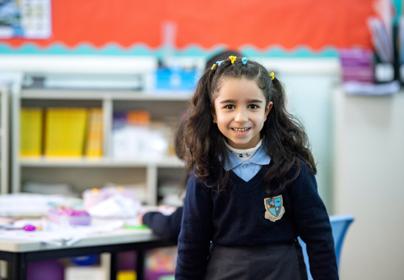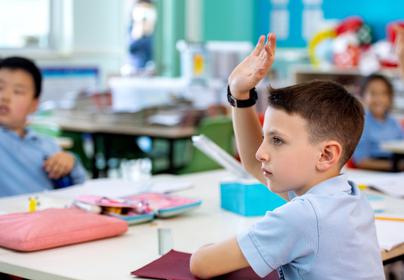At Britannica, we understand that not all students enjoy maths as much as others, and it's our responsibility to make sure that all students are engaged and focused during class. To make the lesson interesting, we use a variety of techniques to make Maths relevant and fun for students. Gamification involves turning maths problems into games, such as puzzles or competitions, to make it more engaging and fun for students. Concrete materials and visual aids help students visualize the problem and understand the concept better. Finally, we also use real-life examples to show students how maths is relevant to their lives and how they can use it in their daily routines.
Could you share one example of Britannica's personalised education?
One example is a Year 3 student who entered the year group mid-year and was struggling with basic number operations. The teacher noticed that the student had some gaps in his learning, so she created a personalised learning plan for the student.
The teacher supported the student during lesson activities using concrete materials and visual aids to support his understanding. As part of the personalised learning plan, the student also attended additional 1-1 Maths intervention lessons, twice per week, to develop his understanding of basic number concepts such as number bonds to 10. This helped him greatly when attempting to access other mathematical concepts that were being taught in the main Year 3 Maths lessons.
As a result, the students’ confidence and overall performance in Maths improved.
If students have a question during the class, can they raise hands and ask at any time?
Yes, students are encouraged to ask questions during class, and we make sure that they have opportunities to do so. Our teachers are trained to explain concepts in multiple ways and adapt their teaching style to suit the individual needs of each student.
If a student is struggling with a concept, the teacher will explain it in detail and provide additional examples until the student understands. If the student needs additional help, the teacher will work with them one-on-one after class or during morning work to ensure that they are confident in the concept.
How do teachers gradually upgrade the content and the ways of teaching to meet children's needs?
At Britannica, we understand that children's brains and cognition develop at different rates and in different ways at different ages. To meet the needs of our students, our teachers gradually upgrade the content and teaching methods from Year 1 to Year 5.
In the early years, we focus on developing foundational skills such as counting, number recognition, and basic operations. In Year 1, teachers use hands-on activities, games, and visual aids to make maths more engaging and interactive. For example, counting blocks, pattern recognition games, and number charts to teach students basic maths concepts.
By Year 3, students are ready to learn more advanced concepts such as multiplication and division. At this stage teachers use a combination of concrete materials and problem-solving tasks to help students understand these concepts. For example, arrays or grouping activities to teach multiplication, and real-life scenarios such as dividing pizza or sharing sweets to teach division.
As students’ progress through the school, we introduce more complex concepts such as fractions, decimals, and algebra. Teachers use visual aids such as fraction strips and pie charts to help students understand these concepts. They also use real-life scenarios such as shopping or cooking to teach students about fractions and percentages.
Overall, Britannica's teachers use a range of teaching methods and adapt their content to suit each student's individual needs and abilities. By gradually upgrading the content and teaching methods from Year 1 to Year 5, our teachers help students develop a strong foundation in maths that will serve them well in their future academic and professional careers.




